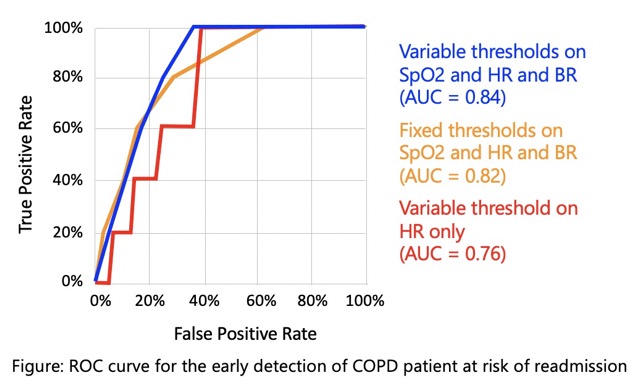Abstract
Introduction
After hospital discharge following an acute exacerbation of COPD (AECOPD), remote patient monitoring (RPM) can prevent readmissions [1] by alerting healthcare professionals when vital signs exceed some limits.
Objectives
Compare the performance of different vital signs alert configurations in early detection of readmission.
Methods
Breath rate (BR), heart rate (HR) and SpO2 of COPD patients were monitored by Bora Care RPM solution during hospitalization for AECOPD and 30 days after discharge.
Results
21 COPD patients (GOLD grade: 9.5% I, 19% II, 33% III, 24% IV; mean age 67 years) were monitored for an average session duration of 37 days (SD 11 days), 5 patients (23.8%) were readmitted. The area under the curve (AUC) of the Receiver Operating Characteristic curve (ROC) was computed to rank the performance of several alert rules on 1) fixed thresholds and 2) variable thresholds based on deviation of the last 48-hour median value from a 15-day baseline. The variable threshold applied simultaneously to SpO2, HR and BR is the best performing alert (AUC=0.84), followed by the fixed threshold applied to SpO2, HR and BR (0.82) and the variable threshold applied to HR only (0.76).

Conclusion
Early detection of a patient's risk of readmission is optimized when SpO2, HR and BR all exceed variable thresholds derived from the patient's 15-day baseline.
[1] Brinchault, G., et al. Rev Mal Resp 15.1 (2023): 70